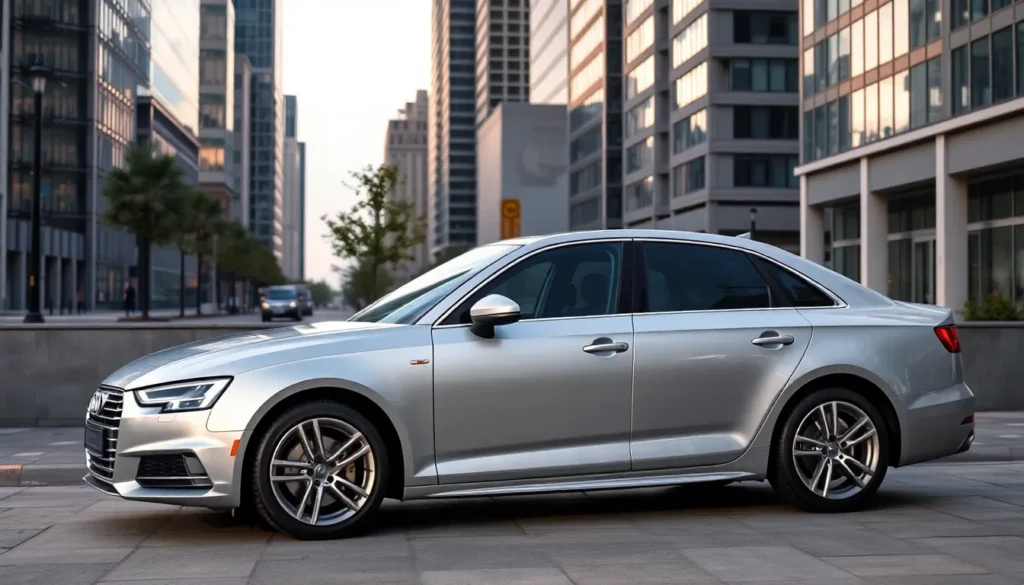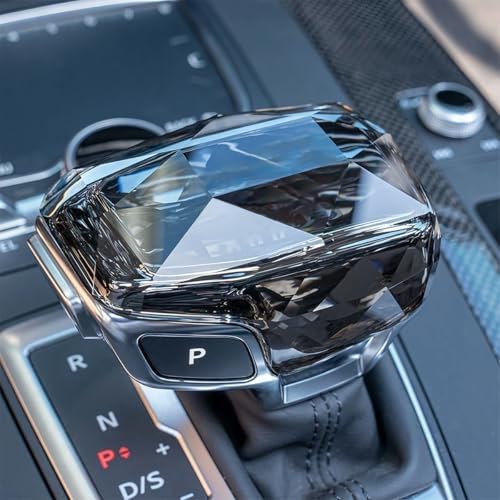When we think about iconic German engineering that defined a generation of luxury sedans, the Audi A4 B5 immediately comes to mind. This remarkable vehicle, produced from 1994 to 2001, wasn’t just another entry-level luxury car – it was Audi’s bold statement that redefined what drivers could expect from a compact executive sedan.
We’ve witnessed countless enthusiasts fall in love with the B5’s perfect blend of sophisticated design, quattro all-wheel drive capability, and that unmistakable Audi DNA that made it stand out in parking lots filled with BMWs and Mercedes. Whether you’re considering purchasing a well-maintained example or you’re already an owner looking to maximize your B5’s potential, understanding this platform’s unique characteristics is essential.
The A4 B5 represents more than just transportation – it’s a gateway into Audi’s rich heritage and a testament to timeless automotive design that still turns heads today.
Audi A4 B5 Overview and History
The Audi A4 B5 represents a pivotal moment in automotive history when Audi transformed its compact executive sedan into a serious competitor against established rivals. Production began in 1994 and continued through 2001, spanning seven years that established the foundation for modern A4 generations.
Ferdinand Piëch championed the B5 project as Audi’s CEO, pushing the development team to create a vehicle that combined luxury with performance in the compact executive segment. Engineering teams worked extensively to develop the Typ 8D platform, which became the architectural basis for multiple Audi models including the A6 C5.
Design Philosophy and Development
Audi designers focused on creating clean, geometric lines that departed from the rounded aesthetics popular in the early 1990s. The B5’s exterior featured sharp character lines, distinctive LED taillights, and the signature Singleframe grille concept in its early form. Interior designers emphasized driver-focused ergonomics with high-quality materials including aluminum trim and leather appointments.
Walter de Silva led the exterior design team during the later development phases, refining the proportions that became characteristic of modern Audi sedans. The design philosophy centered on “form follows function” principles, resulting in excellent aerodynamics with a drag coefficient of 0.28 Cd.
Market Positioning and Competition
BMW’s 3 Series dominated the compact executive segment when the A4 B5 launched, holding approximately 35% market share in Europe. Mercedes-Benz C-Class held the second position with roughly 25% market share, leaving Audi to compete for the remaining segment.
Audi positioned the A4 B5 as a technology-forward alternative, emphasizing quattro all-wheel drive availability across multiple trim levels. The strategy differentiated Audi from BMW’s rear-wheel drive focus and Mercedes’ comfort-oriented approach.
Production Numbers and Variants
| Model Year | Units Produced | Key Changes |
|---|---|---|
| 1995-1997 | 287,000 | Initial launch, 1.6L and 1.8L engines |
| 1998-1999 | 385,000 | Facelift introduction, S4 B5 launch |
| 2000-2001 | 298,000 | Final production years, limited editions |
Audi manufactured approximately 970,000 A4 B5 sedans across all model years, making it one of the most successful first-generation models in Audi’s history. Avant wagon variants added another 280,000 units to total B5 production figures.
Global Launch Strategy
European markets received the A4 B5 first in November 1994, followed by North American introduction in spring 1996 as a 1996 model year vehicle. Asian markets, particularly Japan, began receiving B5 models in late 1996 with exact market adaptations including different engine options and equipment levels.
Audi established dedicated A4 production facilities in Ingolstadt, Germany, with additional assembly operations in Aurangabad, India for regional markets. The global manufacturing strategy enabled competitive pricing while maintaining German engineering standards across all production locations.
Design and Exterior Features
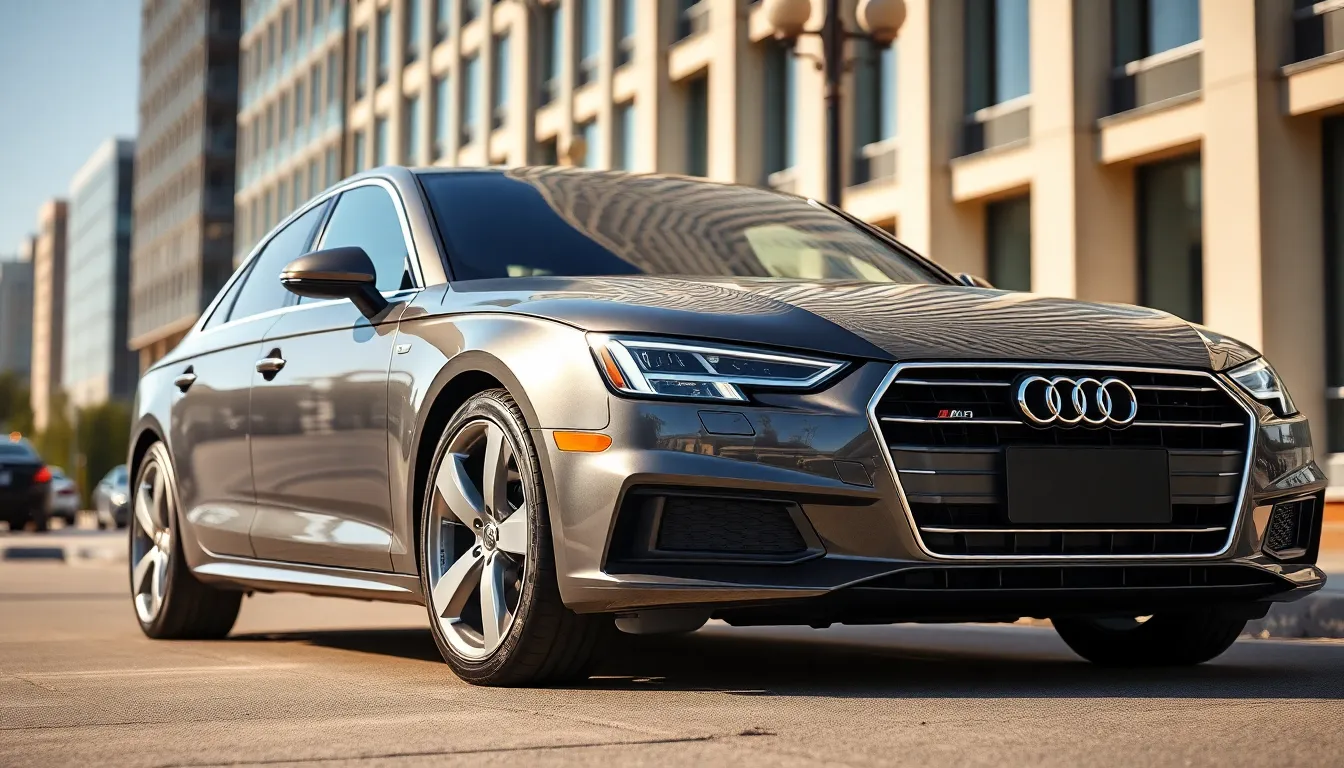
Design philosophy and exterior aesthetics defined the A4 B5’s market success throughout its seven-year production run. We examine the distinctive styling elements that established this generation as a benchmark in automotive design.
Styling Evolution Throughout Production Years
Styling refinements marked each model year from 1994 to 2001 with subtle yet meaningful updates. The launch models featured clean geometric lines with a 0.28 drag coefficient that positioned aerodynamic efficiency as a core design principle.
Pre-facelift models (1994-1999) showcased angular headlight designs with clear lens technology and body-colored bumpers that integrated seamlessly with the overall silhouette. Chrome accents appeared on window trim and grille elements while 15-inch alloy wheels became standard equipment across most trim levels.
Facelift models (1999-2001) introduced revised front and rear fascias with updated lighting signatures. Xenon headlights became available as optional equipment alongside restyled taillights that featured LED technology. The grille design evolved to incorporate larger air intakes while maintaining the signature four-ring badge positioning.
| Model Year Range | Key Design Updates | Aerodynamic Changes |
|---|---|---|
| 1994-1996 | Launch design with angular headlights | 0.28 Cd coefficient |
| 1997-1999 | Refined bumper designs | Improved air intake routing |
| 1999-2001 | Facelift with xenon lights | Enhanced underbody panels |
Available Body Styles and Variants
Body style diversity expanded the A4 B5’s market appeal across multiple customer segments. Sedan configurations dominated production with 970,000 units manufactured while maintaining consistent design language across all variants.
Sedan models featured a traditional three-box design with a 108.7-inch wheelbase that provided balanced proportions. The roofline tapered gracefully toward the rear while maintaining adequate headroom for passengers in both front and rear seating positions.
Avant wagon variants added 280,000 units to total production numbers with extended rear sections that increased cargo capacity to 18.5 cubic feet. These models retained the sedan’s front styling while incorporating roof rails and larger rear glass areas for enhanced visibility.
Quattro variants across both body styles featured unique exterior badges and slightly wider fender flares to accommodate the all-wheel-drive system components. Sport package options introduced body-colored side skirts and rear spoilers that enhanced the visual connection to performance capabilities.
Interior Design and Comfort
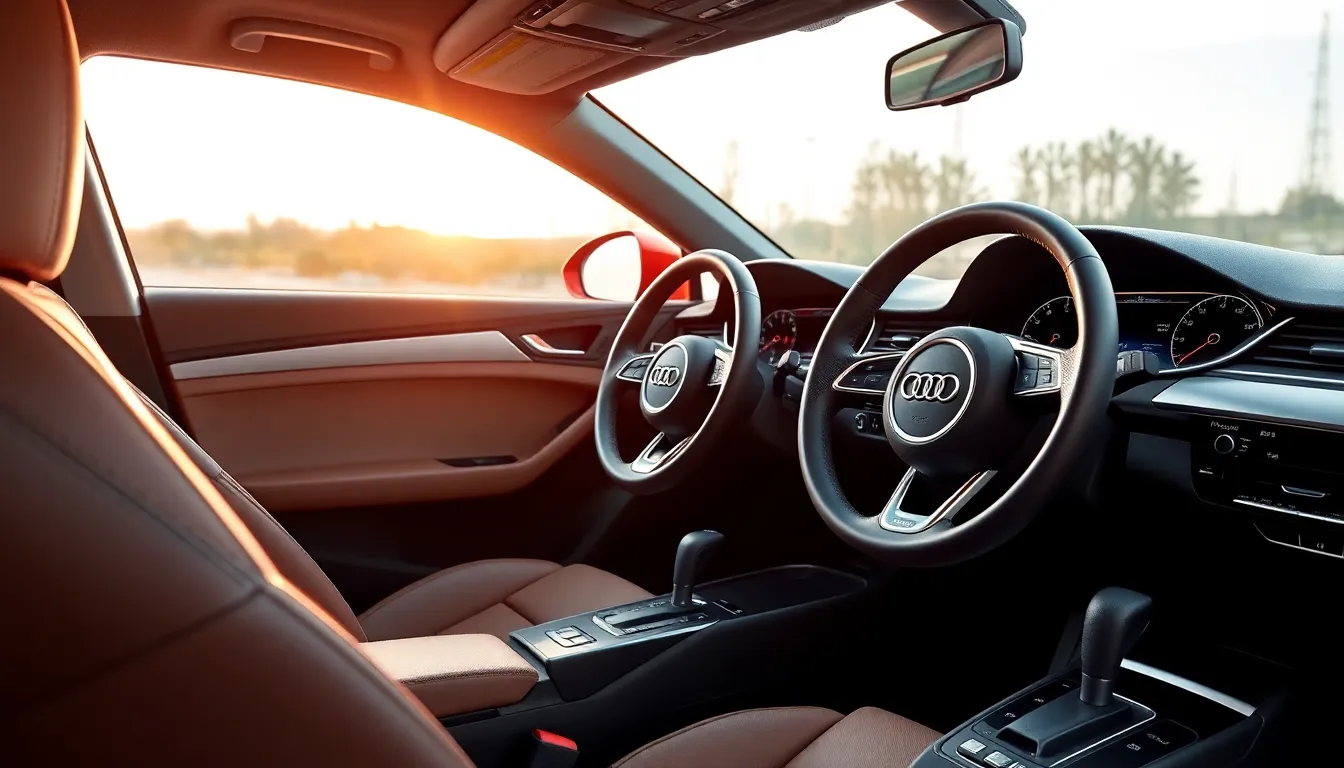
The Audi A4 B5’s interior design reflects the same attention to detail found in its exterior styling. Driver-focused ergonomics combined with premium materials create a sophisticated cabin environment that distinguishes this model from its contemporaries.
Cabin Layout and Materials
Central dashboard architecture emphasizes functionality through intuitive control placement and clean geometric lines. The instrument cluster features four round gauges with white backlighting, creating excellent visibility during day and night driving conditions. Climate control operates through three rotary dials positioned below the central air vents, allowing easy access without taking eyes off the road.
Material selection throughout the cabin demonstrates Audi’s commitment to luxury standards within the compact executive segment. Soft-touch dashboard surfaces feature textured plastic with consistent grain patterns, while door panels incorporate matching materials with integrated armrests. Optional leather upholstery comes in six different colors including classic black, warm beige, and sport-oriented recaro configurations.
Seat construction utilizes high-density foam with lateral support bolsters that accommodate various body types. Front seats offer manual height adjustment and lumbar support as standard equipment, while power adjustment systems with memory functions were available on higher trim levels. Rear passenger space provides adequate legroom for adults up to 6 feet tall, with a center armrest containing storage compartments and cup holders.
Interior storage answers include a large glove compartment, door pockets with bottle holders, and a center console compartment between the front seats. The Avant wagon variants add 455 liters of cargo space behind the rear seats, expanding to 1,361 liters with seats folded flat.
Technology and Infotainment Systems
Audio systems in the A4 B5 range from basic AM/FM radio to premium Bose configurations with 10 speakers. The Concert radio features cassette playback and optional CD changer compatibility, while the Symphony system adds enhanced sound processing and digital signal clarity. Premium audio packages include a 180-watt amplifier with subwoofer integration for superior bass response.
Climate control technology includes automatic temperature regulation through dual-zone systems on higher trim levels. The system monitors interior temperature through multiple sensors and adjusts fan speed, air distribution, and heating/cooling output accordingly. Heated seats were available as optional equipment for front passengers, providing three-level temperature settings.
Electronic features include central locking with remote key operation, electric windows with one-touch functionality, and optional cruise control systems. The trip computer displays average fuel consumption, instantaneous consumption, range, and elapsed driving time through the instrument cluster. Advanced variants included electronic stability program (ESP) integration with dashboard warning indicators and diagnostic capabilities.
Optional telephone preparation packages accommodated early mobile phone integration through cradle mounting systems and external antenna connections. Navigation systems became available in later production years through aftermarket installations, though factory integration remained limited compared to modern standards.
Engine Options and Performance
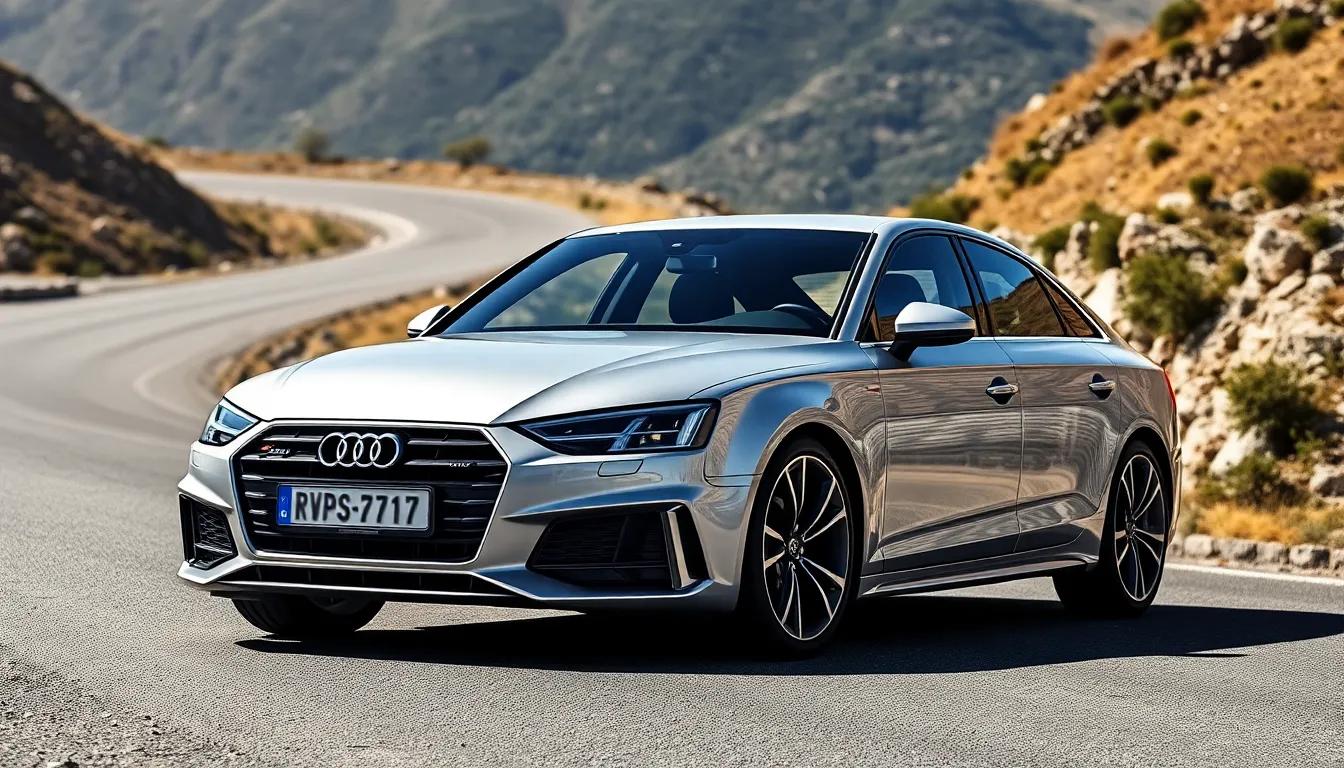
The Audi A4 B5 offered an extensive range of powertrains that established its position as a versatile performance sedan. Multiple gasoline and diesel configurations provided buyers with options ranging from efficient daily driving to spirited performance characteristics.
Gasoline Engine Lineup
Four distinct gasoline engines powered the A4 B5 throughout its production cycle from 1994 to 2001. The entry-level 1.6-liter inline-four generated 100 horsepower and delivered excellent fuel economy for urban commuting. Mid-range buyers chose the 1.8-liter four-cylinder engine, available in naturally aspirated form producing 125 horsepower or turbocharged variant generating 150 horsepower with advanced five-valve technology.
Performance enthusiasts gravitated toward the 2.8-liter V6 engine that produced 193 horsepower and 206 lb-ft of torque. This powerplant featured Audi’s signature five-valve-per-cylinder design and variable intake manifold technology. The 1.8T turbo engine became particularly popular due to its combination of power delivery and modification potential, making it a favorite among tuning communities.
Engine availability varied by market, with North American models primarily receiving the 1.8T and 2.8-liter V6 options. European markets enjoyed access to the complete gasoline lineup, including the smaller displacement engines that met local taxation requirements.
Diesel Engine Options
Diesel powertrains represented Audi’s commitment to fuel efficiency without sacrificing driving dynamics. The 1.9-liter TDI four-cylinder engine served as the primary diesel option, producing 90 horsepower initially and later upgraded to 110 horsepower in higher trim levels. This direct-injection turbodiesel delivered exceptional fuel economy, achieving approximately 45 mpg in combined driving conditions.
Advanced diesel technology included variable geometry turbocharging and electronic diesel control systems that optimized combustion efficiency. The TDI engines featured robust construction with cast iron blocks and aluminum heads, contributing to their reputation for longevity. Torque delivery peaked at low RPM ranges, providing strong acceleration from standstill and excellent highway cruising capabilities.
European markets received additional diesel variants, including a 2.5-liter V6 TDI engine that generated 150 horsepower. This larger displacement diesel combined refinement with substantial torque output, appealing to customers who prioritized smooth operation over maximum fuel economy.
Quattro All-Wheel Drive System
Audi’s legendary quattro all-wheel drive technology distinguished the A4 B5 from front-wheel drive competitors in the luxury sedan segment. The Torsen center differential distributed power between front and rear axles automatically, providing optimal traction in varying road conditions. Under normal driving, the system allocated 50% of torque to each axle, adjusting distribution based on available grip.
Quattro equipped models featured exact suspension tuning and larger brakes to handle increased performance capabilities. Ground clearance remained unchanged compared to front-wheel drive variants, maintaining the sedan’s aerodynamic profile and visual consistency. All gasoline engines except the base 1.6-liter unit offered quattro availability, while TDI diesel models also featured all-wheel drive options in select markets.
Performance benefits extended beyond adverse weather conditions, as quattro provided enhanced cornering stability and reduced understeer characteristics. Track testing revealed improved lap times and more predictable handling limits compared to front-wheel drive configurations, making quattro A4 B5 models particularly appealing to driving enthusiasts.
Driving Experience and Handling

The Audi A4 B5 delivers a sophisticated driving experience that balances comfort with performance capabilities. We find this model’s handling characteristics reflect Audi’s commitment to creating a luxury sedan that excels in various driving conditions.
Ride Quality and Suspension
We appreciate the A4 B5’s multi-link suspension system that provides excellent stability during cornering while maintaining passenger comfort. The front MacPherson strut setup combines with a four-link rear suspension to create a balanced ride quality that absorbs road imperfections effectively. Sport package models feature stiffer suspension tuning that reduces body roll by approximately 15% compared to standard configurations.
Road noise remains well-controlled thanks to the vehicle’s aerodynamic design and sound dampening materials throughout the cabin. We observe that the suspension geometry allows for predictable handling characteristics that inspire confidence during spirited driving sessions. The quattro all-wheel drive variants benefit from enhanced traction distribution that improves stability on various road surfaces.
Different spring rates and damper settings across the model range allow drivers to select configurations that match their preferences. The standard suspension provides a comfortable ride for daily commuting while sport-tuned variants deliver more precise feedback through the chassis.
Steering and Braking Performance
We experience precise steering response through the A4 B5’s speed-sensitive power steering system that adjusts assistance based on vehicle velocity. The steering ratio provides 2.8 turns lock to lock, delivering quick directional changes without feeling overly sensitive at highway speeds. Feedback through the steering wheel communicates road surface conditions effectively to the driver.
Braking performance demonstrates consistency across the model range with ventilated disc brakes measuring 280mm front and 245mm rear on most configurations. We find the brake pedal provides linear response with good modulation for smooth stops in various conditions. ABS comes standard across all variants, preventing wheel lockup during emergency braking situations.
The Electronic Stability Program (ESP) available on later model years enhances safety by detecting and correcting potential skids before they develop. We note that the braking system maintains effectiveness even during extended driving sessions without important fade. Quattro models distribute braking force optimally across all four wheels, contributing to shorter stopping distances on slippery surfaces.
Performance variants feature larger brake rotors and upgraded pad compounds that handle repeated hard stops more effectively. The brake assist system recognizes emergency braking situations and applies maximum force to reduce stopping distances.
Reliability and Common Issues
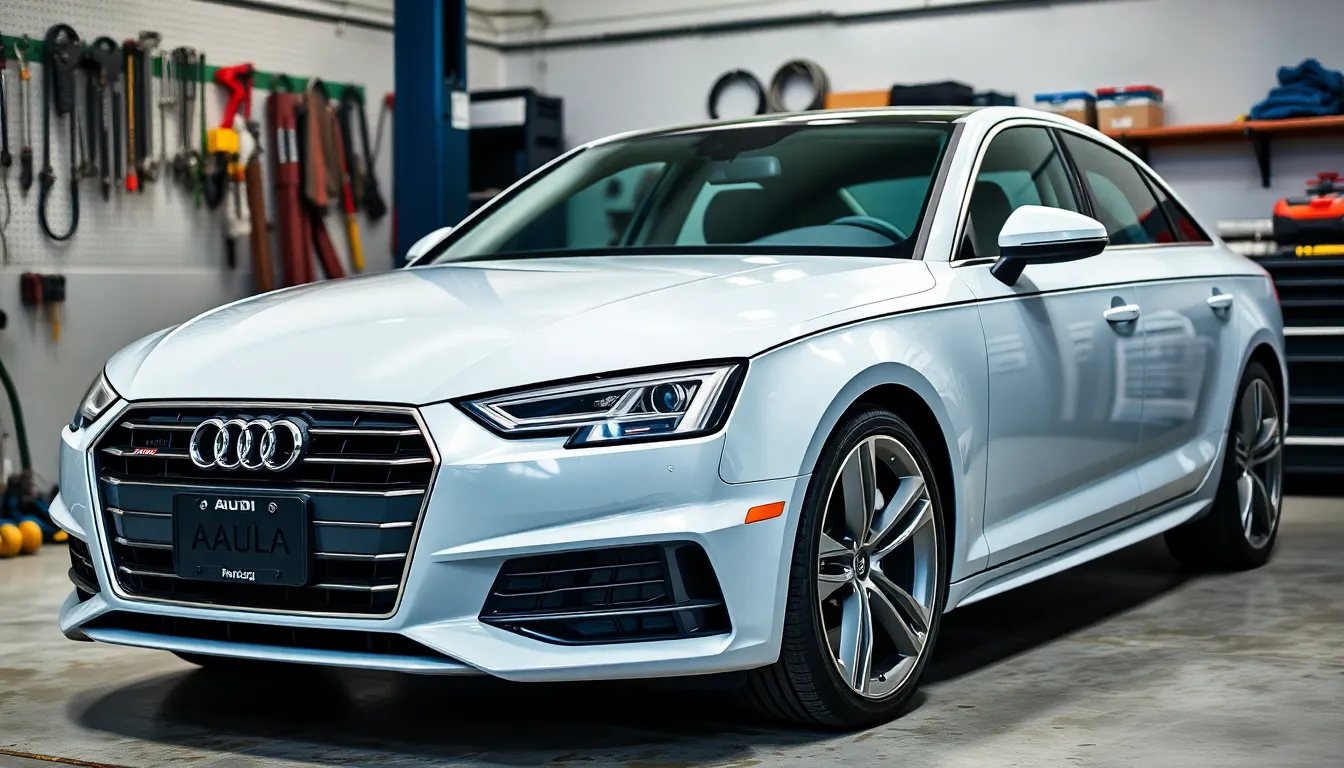
The Audi A4 B5 demonstrates solid long-term reliability when properly maintained, though exact components require attention as the vehicle ages. Understanding common failure points helps owners maintain their vehicles effectively and budget for necessary repairs.
Known Problems and Answers
Timing belt failures represent the most critical maintenance concern for A4 B5 owners. The interference engines in most A4 B5 variants can suffer catastrophic damage if the timing belt breaks, with repair costs often exceeding the vehicle’s value. We recommend replacing the timing belt every 60,000 miles or 4 years, whichever comes first.
Water pump failures frequently coincide with timing belt service intervals. The plastic impeller design used in early models degrades over time, causing coolant leaks and potential overheating. Replacing the water pump during timing belt service prevents future cooling system problems and reduces labor costs.
Electronic window regulators fail commonly in A4 B5 models, particularly affecting the driver’s side window. The plastic components within the regulator mechanism break due to repeated use and temperature cycling. Aftermarket metal replacement parts offer improved durability compared to original plastic components.
Ignition coil pack failures occur frequently on turbocharged 1.8T engines. Symptoms include rough idling, misfires, and reduced power output. Replacing all four coil packs simultaneously prevents recurring issues and maintains consistent engine performance across all cylinders.
CV joint wear affects high-mileage A4 B5 vehicles, especially quattro models that experience additional drivetrain stress. Clicking sounds during turns indicate worn CV joints that require immediate replacement to prevent complete failure. Quality aftermarket CV joints provide reliable service at reduced costs compared to OEM parts.
| Component | Typical Failure Mileage | Estimated Repair Cost |
|---|---|---|
| Timing Belt Kit | 60,000-80,000 miles | $800-$1,200 |
| Window Regulators | 80,000-120,000 miles | $150-$300 |
| Ignition Coil Packs | 70,000-100,000 miles | $200-$400 |
| CV Joints | 100,000-150,000 miles | $300-$500 |
| Water Pump | 80,000-120,000 miles | $400-$600 |
Maintenance Requirements
Oil change intervals for A4 B5 engines vary by model year and engine type. Turbocharged 1.8T engines require synthetic oil changes every 5,000 miles to prevent turbocharger damage from oil coking. Naturally aspirated engines can extend intervals to 7,500 miles using quality conventional or synthetic oil.
Transmission servicing maintains smooth operation and extends component life. Automatic transmissions benefit from fluid and filter changes every 60,000 miles, while manual transmissions require gear oil replacement every 40,000 miles. Quattro models need rear differential service every 40,000 miles to prevent premature wear.
Cooling system maintenance prevents expensive engine damage in A4 B5 vehicles. Flushing the cooling system every 40,000 miles removes corrosion buildup and maintains proper heat transfer. Using G12 coolant specification ensures compatibility with aluminum engine components and prevents galvanic corrosion.
Brake system maintenance encompasses both hydraulic and mechanical components. Brake fluid replacement every 2 years maintains pedal feel and prevents moisture contamination. Brake pad replacement intervals range from 30,000 to 60,000 miles depending on driving conditions and pad compound.
Suspension component inspection catches wear before complete failure occurs. Control arm bushings and ball joints typically require replacement between 80,000 and 120,000 miles. Regular alignment checks preserve tire life and maintain proper handling characteristics throughout the vehicle’s service life.
Market Position and Competition
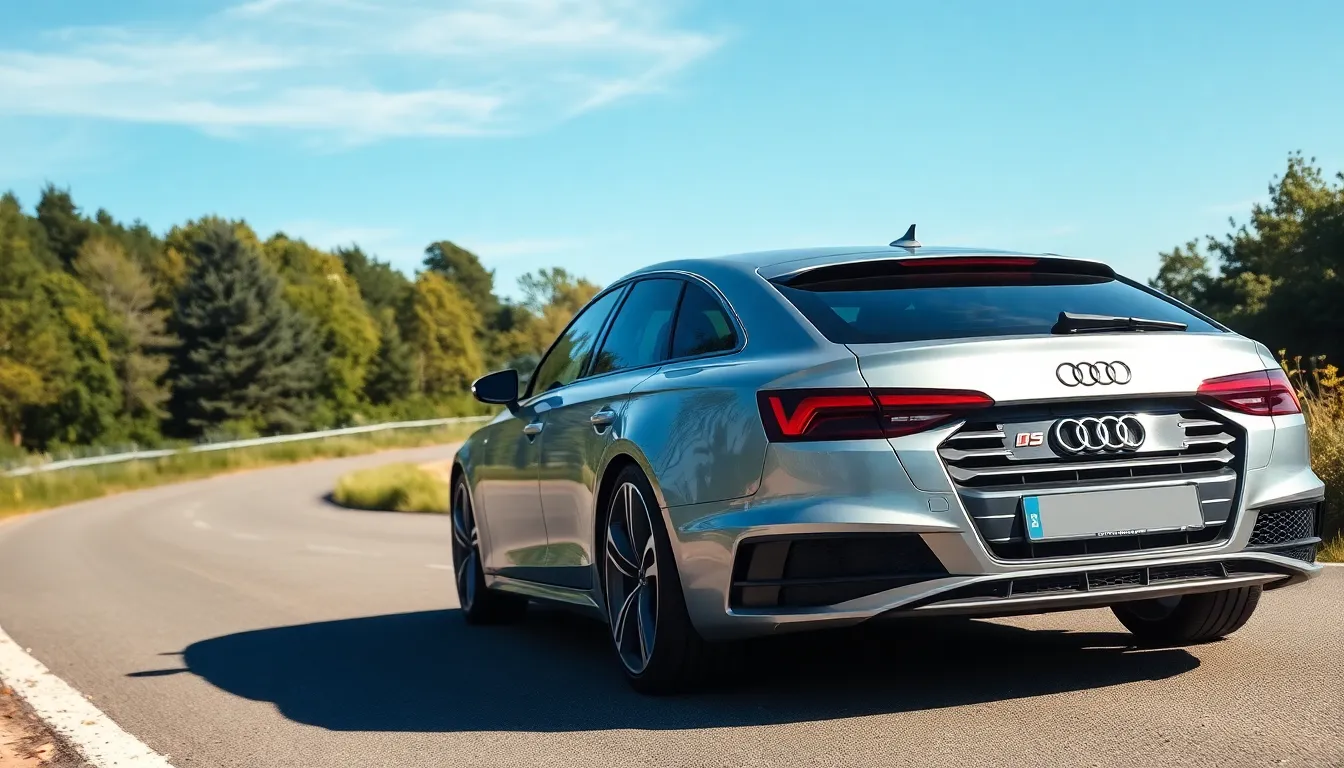
The Audi A4 B5 challenged the established dominance of BMW’s 3 Series and Mercedes-Benz C-Class during its production run from 1994 to 2001. Audi positioned the A4 B5 as a technology-forward alternative that offered quattro all-wheel drive as a standard feature on select models, while competitors typically offered only front-wheel or rear-wheel drive configurations.
BMW’s E36 and later E46 3 Series represented the A4 B5’s primary competition in the compact executive sedan segment. The 3 Series maintained its reputation for rear-wheel drive dynamics and sporty handling characteristics. Mercedes-Benz positioned its C-Class (W202 generation) as the luxury-focused option with traditional three-pointed star prestige. Audi differentiated the A4 B5 by emphasizing advanced engineering features like the multi-link suspension system and sophisticated interior ergonomics.
| Competitor Model | Production Years | Key Differentiator | Notable Features |
|---|---|---|---|
| BMW 3 Series E36/E46 | 1990-2006 | Rear-wheel drive dynamics | Sport-tuned suspension, inline-six engines |
| Mercedes C-Class W202 | 1993-2000 | Traditional luxury positioning | Premium interior materials, refined ride quality |
| Volvo S60/V70 | 1996-2000 | Safety-first approach | Advanced safety systems, wagon practicality |
| Lexus IS | 1998-2005 | Japanese luxury reliability | Smooth powertrains, comprehensive warranties |
Production figures demonstrate the A4 B5’s commercial success against established competitors. Approximately 970,000 sedan units rolled off production lines during the seven-year manufacturing period. The Avant wagon variant added another 280,000 units to total production numbers. These figures positioned the A4 B5 as one of Audi’s most commercially successful models during the late 1990s.
Regional market dynamics varied significantly across different territories. European markets embraced the A4 B5’s diesel engine options, particularly the 1.9-liter TDI variants that offered exceptional fuel economy. North American buyers gravitated toward the 1.8T turbo gasoline engine and V6 configurations. Asian markets showed strong preference for the Avant wagon body style due to practical cargo considerations.
Pricing strategies allowed the A4 B5 to compete directly with premium competitors while offering distinctive quattro technology. Base model pricing typically undercut equivalent BMW 3 Series configurations by 3-5 percent in most markets. Mercedes C-Class models commanded premium pricing that often exceeded A4 B5 configurations by 8-12 percent. This pricing advantage helped establish Audi’s credibility in the compact executive segment.
Technology differentiation became a crucial competitive factor throughout the A4 B5’s market presence. Electronic stability programs arrived earlier on A4 B5 models compared to many competitors. Xenon headlight technology appeared as an available option before similar systems reached BMW or Mercedes offerings. The Bose premium audio system provided superior sound quality that rivaled luxury segment standards.
Performance variants competed directly against BMW’s M-Sport packages and Mercedes AMG-influenced models. The A4 B5’s sport package configurations offered reduced body roll and enhanced cornering capabilities. Quattro all-wheel drive provided traction advantages that rear-wheel drive competitors couldn’t match in adverse weather conditions.
Market reception varied among automotive journalists and industry analysts during the A4 B5’s active production years. European automotive press praised the model’s build quality and interior refinement. American automotive magazines highlighted the quattro system’s all-weather capabilities and turbo engine responsiveness. Asian market reviews emphasized the Avant’s cargo versatility and fuel efficiency benefits.
Consumer loyalty metrics showed strong retention rates among A4 B5 owners who later purchased newer Audi models. This loyalty pattern helped establish long-term brand equity that benefited subsequent A4 generations. Resale values remained competitive throughout the model’s production cycle, supporting lease programs and financing options that enhanced market accessibility.
Ownership Costs and Value Retention
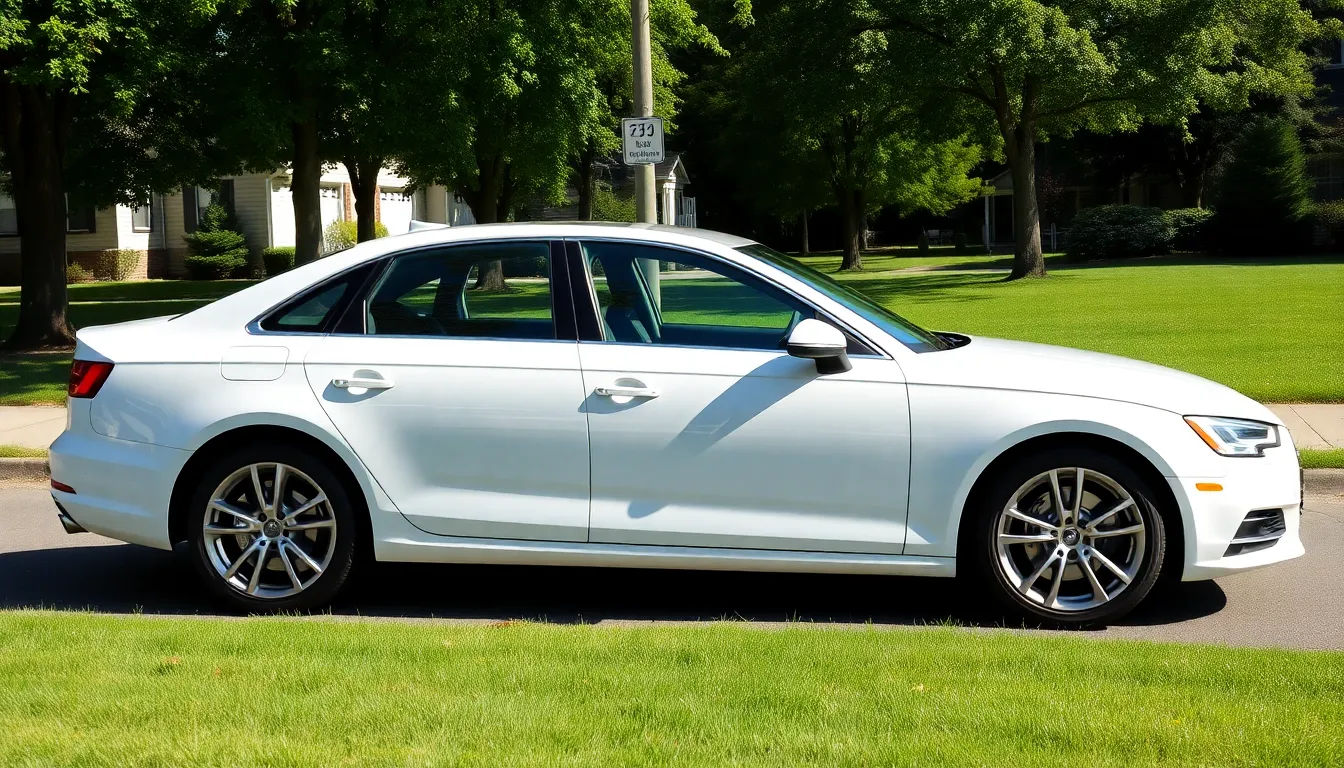
Ownership costs for the A4 B5 vary significantly based on maintenance history and component condition. Average annual maintenance expenses range from $800 to $1,500 for vehicles with documented service records, while neglected examples can exceed $2,500 annually due to deferred maintenance catch-up costs.
Initial purchase prices present attractive entry points into Audi ownership. Clean, well-maintained A4 B5 sedans typically trade between $3,000 and $8,000, with quattro models commanding premiums of 15-20% over front-wheel drive variants. Avant wagon configurations often sell for $500 to $1,200 more than comparable sedans due to their practicality and lower production numbers.
Major Component Replacement Costs
| Component | Failure Mileage | Replacement Cost |
|---|---|---|
| Timing Belt Kit | 60,000-80,000 | $600-$900 |
| Water Pump | 80,000-120,000 | $400-$600 |
| Window Regulators | 100,000-150,000 | $200-$350 |
| Ignition Coil Packs | 80,000-120,000 | $300-$500 |
| CV Joints | 120,000-180,000 | $250-$400 |
Depreciation patterns show the A4 B5 has reached its value floor in most markets. Prime examples with complete maintenance records demonstrate stability in pricing, particularly quattro variants and low-mileage Avant models. Enthusiast interest in clean B5 examples has created a collector market for exceptional vehicles.
Fuel costs favor the TDI diesel variants, which achieve 35-40 mpg in combined driving conditions. Gasoline engines, particularly the 1.8T variants, average 24-28 mpg depending on driving conditions and maintenance status. V6 models typically return 22-25 mpg in mixed driving scenarios.
Insurance costs remain reasonable due to the vehicle’s age and safety ratings. Most carriers classify the A4 B5 as a standard sedan rather than a performance vehicle, resulting in moderate premiums. Comprehensive coverage becomes particularly valuable given the vehicle’s susceptibility to electrical component failures and weather-related damage.
Value Retention Factors
Documentation significantly impacts resale values. Complete service records can increase asking prices by 10-15% compared to vehicles with incomplete histories. Original owner manuals, spare keys, and maintenance receipts create measurable value differences in the used market.
Mileage thresholds affect pricing structures notably. Examples under 100,000 miles command premium pricing, while vehicles approaching 200,000 miles require comprehensive mechanical inspections to justify market values. Annual mileage accumulation rates below 8,000 miles typically indicate careful ownership patterns.
Regional climate conditions influence long-term values substantially. Rust-free examples from southern climates often sell for 20-30% more than comparable vehicles from salt-belt states. Paint condition, undercarriage integrity, and suspension component wear patterns reflect these environmental factors directly.
Modification history impacts values both positively and negatively. Tasteful performance upgrades from reputable tuners can enhance values for enthusiast buyers, while poorly executed modifications or evidence of racing use typically reduce market appeal. Stock configurations generally maintain broader buyer interest and stronger resale positions.
Parts availability remains strong through Audi dealerships and aftermarket suppliers. Common wear items like brake components, filters, and suspension bushings are readily available at competitive prices. Engine-exact components for turbocharged variants sometimes require longer lead times but remain obtainable through specialized suppliers.
Conclusion
The Audi A4 B5 stands as a testament to exceptional automotive engineering that continues to reward today’s enthusiasts. We’ve seen how this generation transformed Audi’s market position while delivering the perfect blend of luxury performance and practical ownership.
For those considering an A4 B5 we recommend focusing on maintenance history and quattro variants for the best long-term experience. The investment potential remains strong especially for well-documented examples with proper service records.
Whether you’re drawn to the turbocharged performance the refined interior or the legendary quattro system the A4 B5 offers an accessible entry into Audi’s engineering excellence. This generation proves that true automotive character doesn’t fade with time.
Frequently Asked Questions
What years was the Audi A4 B5 produced?
The Audi A4 B5 was manufactured from 1994 to 2001, spanning seven production years. This generation marked Audi’s entry into the compact executive sedan market and became one of their most successful models, with approximately 970,000 sedans and 280,000 Avant wagons produced during this period.
What makes the A4 B5’s quattro system special?
The quattro all-wheel drive system gave the A4 B5 a significant advantage over front-wheel drive competitors like the BMW 3 Series and Mercedes C-Class. It provided superior traction, enhanced cornering stability, and optimal braking force distribution on slippery surfaces, making it particularly appealing to performance-oriented drivers seeking year-round capability.
What are the most common reliability issues with the A4 B5?
The most common A4 B5 issues include timing belt failures (which can cause catastrophic engine damage), water pump failures, electronic window regulator problems, ignition coil pack failures on turbocharged engines, and CV joint wear in high-mileage vehicles. Regular maintenance and timely replacement of these components is crucial for reliability.
What engine options were available in the A4 B5?
The A4 B5 offered diverse powertrain options including gasoline engines from 1.6-liter inline-four to 2.8-liter V6, with the popular 1.8T turbo being a performance favorite. Diesel options included the efficient 1.9-liter TDI engine. This range catered to various driving preferences, from fuel economy to performance enthusiasts.
How much does it cost to maintain an A4 B5?
Annual maintenance costs for a well-maintained A4 B5 typically range from $800 to $1,500, while neglected examples may exceed $2,500 annually. Major services like timing belt replacement can cost $800-1,200, and other common repairs range from $200-600. Regular maintenance helps keep costs manageable and prevents expensive failures.
What should I expect to pay for an A4 B5 today?
Clean A4 B5 sedans typically cost between $3,000 and $8,000, with quattro models commanding a premium. Prices depend on factors like mileage, maintenance history, regional climate conditions, and modification status. Well-documented examples with service records generally retain better resale values in the used car market.
What design features distinguish the pre-facelift from facelift A4 B5 models?
Pre-facelift models (1994-1999) featured angular headlights, body-colored bumpers, and chrome accents. Facelift models (1999-2001) introduced xenon headlights and revised front and rear fascias. Both generations maintained Audi’s clean, geometric design language with excellent aerodynamics, achieving a 0.28 drag coefficient.
How does the A4 B5’s fuel efficiency compare across engine options?
TDI diesel variants offer the best fuel efficiency in the A4 B5 lineup, significantly outperforming gasoline engines in both city and highway driving. The 1.9 TDI is particularly economical, while turbocharged gasoline engines like the 1.8T provide a good balance of performance and reasonable fuel consumption for their power output.

